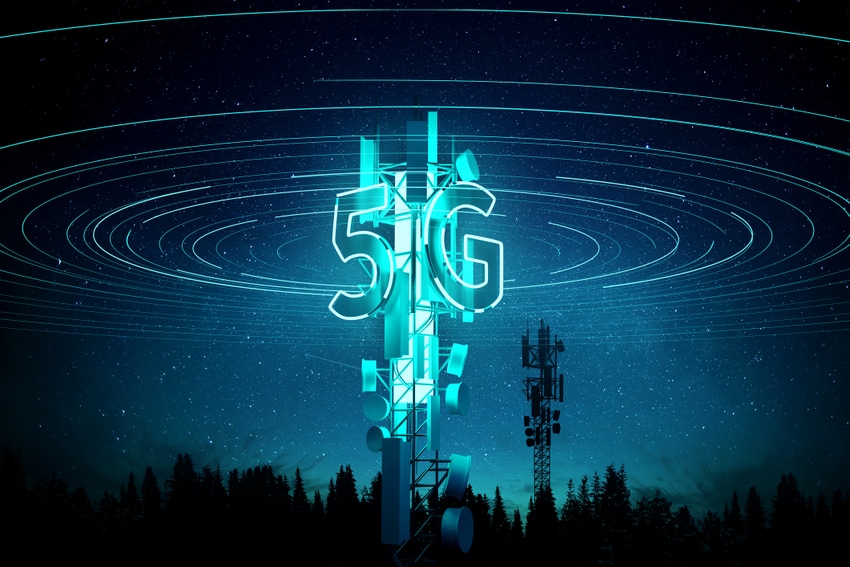KDDI has selected Samsung to provide the kit for its 5G standalone core network, and its pretty excited about the potential for furthering the 5G experience in Japan.
February 10, 2023

KDDI has selected Samsung to provide the kit for its 5G standalone core network, and its pretty excited about the potential for furthering the 5G experience in Japan.
The news will hardly raise any eyebrows; the South Korean operator and vendor have been working together for years. But the announcement is noteworthy because, amongst other things, it demonstrates the growing desire amongst Japanese players to push the 5G ecosystem on.
According to Samsung, its cloud-native, 5G SA core solution will afford KDDI the usual benefits we are used to hearing in connection with 5G: lower latency and high reliability, as well as 5G-enhanced capabilities. It supports both 4G and 5G networks, thereby offering seamless migration from one to the other, which is important at this stage in proceedings, and comes with a range of features, such as an overload control feature designed to counteract sudden traffic spikes.
The vendor also highlighted the fact that Samsung and KDDI are operating multiple cores in various locations for the sake of redundancy. Each core is capable of picking up loads should one active core become unavailable due to a traffic burst or a natural disaster.
“With Samsung’s 5G SA Core, we will offer unprecedented speed, instantaneous connectivity and high reliability which could bring numerous new experience value for consumers and enterprises,” said Toshikazu Yokai, Managing Executive Officer, General Manager of Mobile Network Technical Development Division at KDDI. “We look forward to continue advancing 5G networks to stay ahead of our customers’ needs.”
What he didn’t say, but probably didn’t need to, was that by advancing its 5G capabilities, KDDI also hopes to keep itself in a competitive position with its market rivals.
It sits squarely in the middle of the market in terms of customer numbers, claiming a 32 percent market share as of the end of September, according to the latest figures from Japan’s Telecommunications Carriers Association. NTT DoCoMo is bigger, Softbank smaller. It’s worth noting that the TCA does not include fourth network operator Rakuten Mobile in its data, presumably because it has yet to rack up a meaningful number of customers.
The launch of Rakuten Mobile as an MNO almost three years ago gave competition something of a shot in the arm in the Japanese mobile market, and of course it coincided with the early days of 5G in the country, another competitive battleground. The country’s operators are still in something of a landgrab phase, so getting its 5G SA core sorted is a step forward for KDDI.
The telco is behind DoCoMo in the 5G customer race, with just over 15 million at the end of last year to its rival’s 18.22 million. Softbank didn’t share numbers. Nonetheless, it’s clearly a close call at present, making the Japanese market one to watch going forward.
Spectrum allocation, for 5G services and beyond, is also likely to focus the attention of the broader industry on Japan in the coming months and years.
The government is planning to introduce an auction system for the allocation of spectrum, according to a report by Nikkei last month. While spectrum auctions are the norm in most telecoms markets, Japan has historically doled out airwaves to its mobile operators at no cost and with no competitive element, the thinking doubtless being that operators need their cash to roll out networks.
However, the news agency claims that Japan’s Ministry of Internal Affairs and Communications will introduce the auction concept by the end of fiscal 2025, or end-March of that year, although it notes that the winners will not be determined solely by bid price, but also by technology roadmaps and business plans.
It’s a proposal that has been in the works for some time and has both supporters and detractors. As the Japan Times reported last summer, DoCoMo has come out in favour of the idea, while newcomer Rakuten fears for its competitive position. KDDI and Softbank have less strong views, by all accounts.
It will be interesting to see how that one plays out, and ultimately what, if any, effect it has on the market.
In the meantime, the telcos are focusing on their own 5G rollouts. For KDDI that means leveraging the Samsung 5G SA core to facilitate higher-performance use cases like smart factories, automated vehicles, cloud-based online gaming and multi-camera live streaming at sporting events. It is also keen to push on with network slicing, something that will help it to attract enterprise customers and the revenue potential they offer.
But that’s not a position unique to KDDI, of course, or even to Japan. Mobile operators the world over have the same goals.
Get the latest news straight to your inbox. Register for the Telecoms.com newsletter here.
About the Author(s)
You May Also Like








.png?width=300&auto=webp&quality=80&disable=upscale)


_1.jpg?width=300&auto=webp&quality=80&disable=upscale)


.png?width=800&auto=webp&quality=80&disable=upscale)